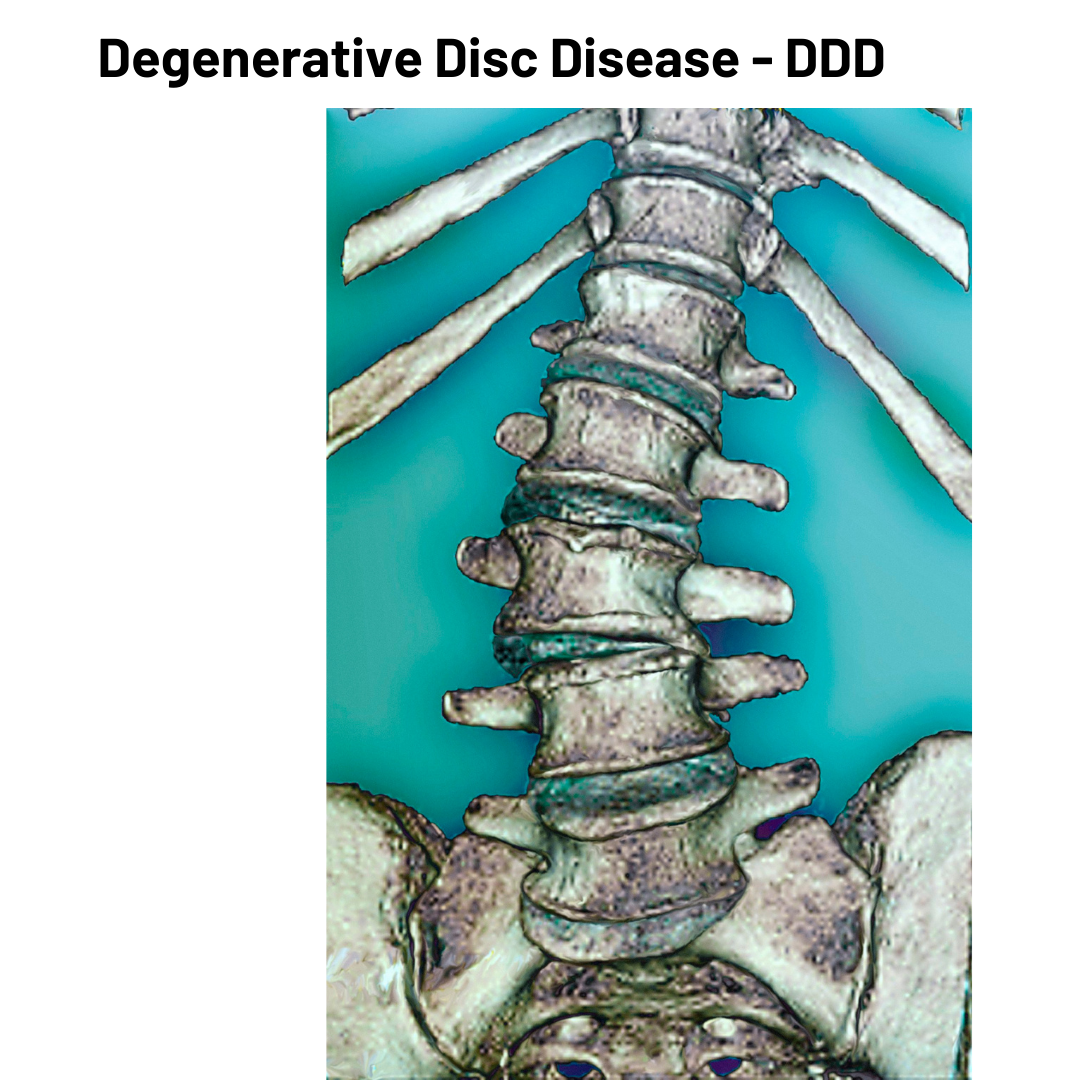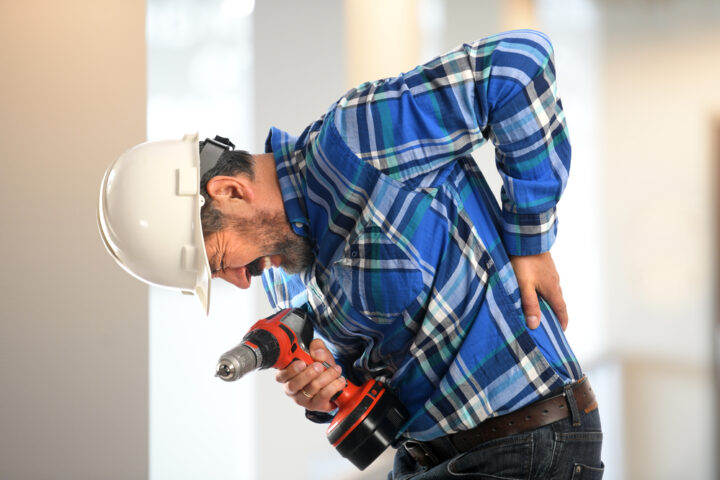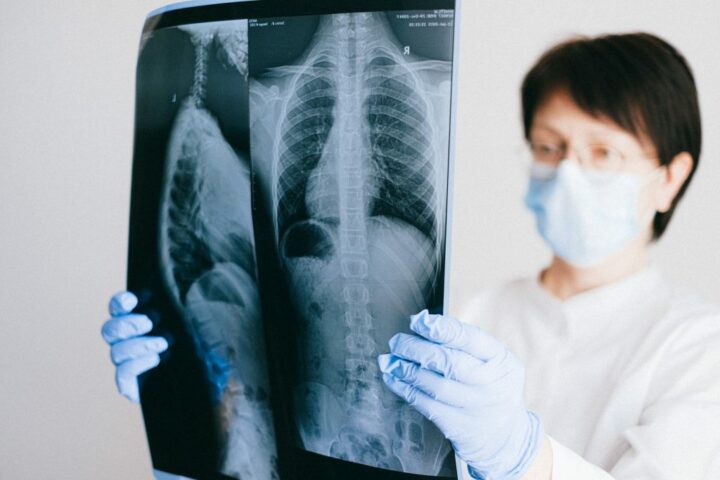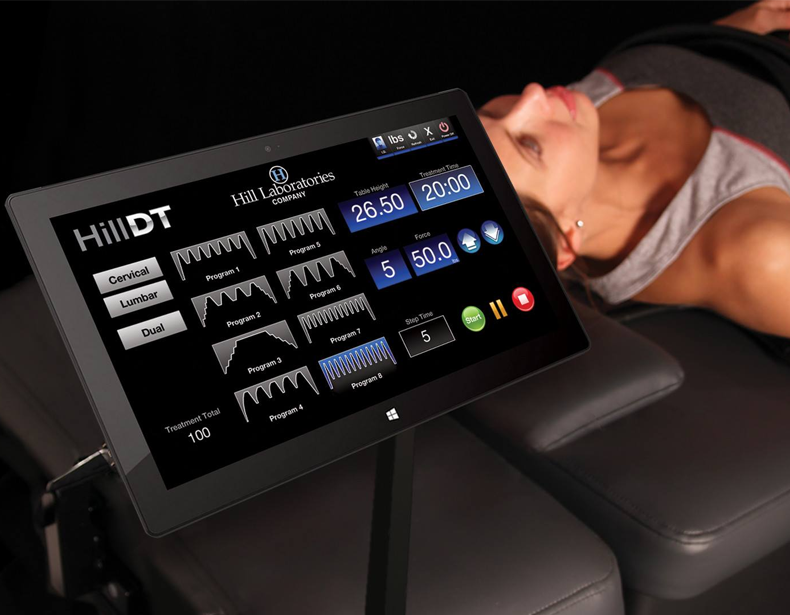DDD is not a disease it’s a condition – which most of us can get during our lifetime.
What is DDD?
In most people it is inevitable that over time the body parts will start to wear out. Degenerative Disc Disease is when the cushions (discs), between the spinal vertebrae (back bones), starts to lose their plumpness (ability to retain fluid). This does not always cause pain, but if it does, it can be severe.
What Causes DDD?
There are numerous contributors to Degenerative Disc Disease.
Time – As you age you expect normal wear and tear of body parts.
Injury – In some cases it could be the simplest of activities like lifting a child or falling off a swing. In other cases, it could be something more significant such as a car or sporting accident. Unless it is a significant injury, you may not even notice a problem at the time, but the event may start the process of the disc deterioration.
Family History – Although it is not definitive, your genes could play a big part in whether you are more likely to experience significant deterioration or not.
Activity – Being active is good but some activities can contribute to disc issues such as certain motions or positions, especially if repetitive or with weight, such as lifting. Sedentary positions such as lengthy periods of sitting can be equally as problematic.
Weight – Extra kilos, whether carried as body fat or through lifting, is more likely to progress to DDD. The discs will have to carry the extra load and therefore become compressed and compromised more quickly.
Smoking – Evidence would suggest that smokers are more likely to get spinal conditions including DDD.
How Do you Know if you Have DDD?
The only way to really know if you have Degenerative Disc Disease is through spinal imaging. This will be evidenced by an Xray or MRI. Although pain is the first sign that there is something wrong, it is not always DDD. It can be confusing as there are other conditions which could be generating the pain, and your doctor will need to rule out non spinal conditions. Imaging will show whether any disc degenerations may be the cause.
Treatments
Your doctor will be able to diagnose what the cause of your pain is – remembering that most people will live pain free with some form of spinal deterioration.
Most cases of Degenerative Disc Disease will respond to non surgical or conservative treatments. These could consist of:
- Initial rest and ice when acute pain presents
- Physical treatment (Chiro, Physio, Osteo)
- Massage or Myotherapy
- Hydrotherapy
- Heat packs
- Anti-inflammatory diet
- Over the counter (OTC) pain medication
Should the symptoms persist and not respond to conservative treatments, your doctor may prescribe further pain relief which could be:
- Anti-inflammatory drugs (NSAIDs)
- Opioid drugs
- Muscle relaxing medications
- Therapeutic injections such as
- Cortisone
- Nerve blocks
Pain medications should only be used for a short period of time. They can very quickly become addictive and the cause of serious dependencies or other medical conditions. If a painful condition continues for longer than a few weeks, then the pain medications are only masking the condition – not resolving it.
Most cases of Degenerative Disc Disease will not require invasive surgery. If pain and symptoms become chronic however, which means the symptoms have been present for 3 months or more and conservative treatments have not provided relief, your doctor may suggest a surgical intervention to:
- remove some of the damaged disc
- remove the whole disc and permanently fuse the vertebrae together
- remove the disc and replace it with an artificial disc
Is there an Alternative to Surgery?
Not everyone will be suitable for surgery. Some may not want to go through the invasive procedure or lengthy recovery period. This is when non surgical spinal decompression may be appropriate.
Non surgical spinal decompression can be effective for all disc related issues. It does not require any invasive procedures, drugs, or time away from normal activities. This non-invasive procedure does require a commitment to a course of treatments. At each treatment the vertebrae are very gently stretched apart to give the problematic disc relief from pressure. The gentle stretching is increased gradually with repeated treatments, giving the disc the opportunity to rehydrate, return to its original position and move away from any nerves. Removing the interference from the nerves allows pain and other symptoms to be relieved.









